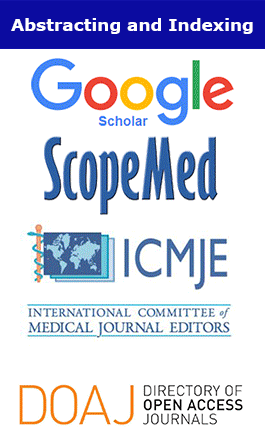Progress in Medical Sciences. 2017;
1(1):(5-113)
Abdominal obesity in stroke: An exploratory survey of stroke survivors attending physiotherapy facilities in Nigeria
Grace O Vincent-Onabajo, Helen Daniel, Muhammad Usman Ali, Mamman Ali Masta
Abstract
Background: Abdominal obesity is a risk factor for many life threatening and life-changing chronic conditions. A survey was conducted to determine the prevalence of abdominal obesity among stroke survivors undergoing rehabilitation. Methods: Ninety stroke survivors attending three physiotherapy outpatient facilities in a metropolitan city in Nigeria participated in this cross-sectional survey. Abdominal obesity was determined with the measurement of waist circumference. Data on participants’ personal factors namely age, gender, post-stroke duration, and level of disability (Modified Rankin Scale) were also obtained and the prevalence of abdominal obesity was explored in relation to these factors using Chi-square statistics. Results: Mean (SD) age of participants was 58.9 (9.7) years, and male stroke survivors were in the majority (62.2%). Twenty-two participants were observed to have abdominal obesity giving a prevalence rate of 24.4%. Females had a significantly higher prevalence (44.1%) compared to males (12.5%). No other personal factors, however, resulted in significantly different prevalence rates. Conclusion: Approximately one in four stroke survivors in this study was observed to have abdominal obesity with a significantly higher prevalence among female stroke survivors. Further studies would be required to document outcomes of abdominal obesity after stroke and identify effective preventive and intervention strategies to address abdominal obesity among stroke survivors


